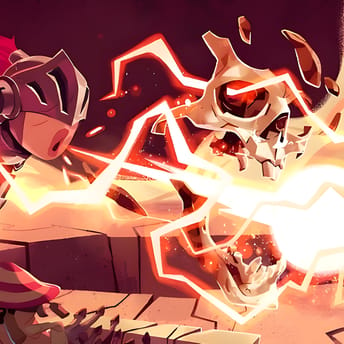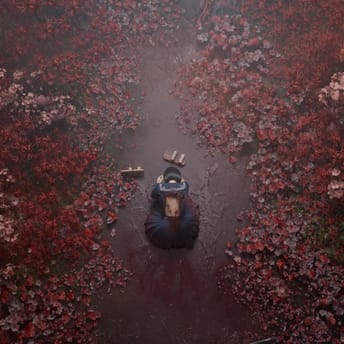
From Demon’s Souls to Elden Ring: History of FromSoftware Games
|
|
The FromSoftware dark fantasy games (often referred to as the Soulsborne series) defy simple categorization. They are at once hardcore action RPGs, philosophical parables about the cycle of life and death, and nuanced explorations of the boundaries of complex design. This genre eventually came to be called Soulslike.
In the late 2000s, when the mainstream titles were obsessively striving for cinematography, FromSoftware chose the opposite vector—to give the player freedom of interpretation and the right to make a fatal mistake. The author of the concept, game director Hidetaka Miyazaki, was inspired by classic CRPGs and his personal childhood experience reading English-language books, where certain words he couldn’t fully understand created mystery and ambiguity, leaving space for the imagination to fill in the blanks.
He decided to convey this feeling to the screen by minimizing cutscenes and distributing the lore across item descriptions and environmental design. Meanwhile, the idea of the defeat’s value played a critical role: every death became a lesson, and a hard-to-reach triumph, an emotional reward. This marked the birth of an aesthetic where mechanics and narrative work as a seamless system of learning and exploration.
Origins of Soulsborne: Demon’s Souls (2009)
At the time, known for niche series (King’s Field and Armored Core), the studio began developing Demon’s Souls as a spiritual successor to King’s Field for PlayStation 3, with support from Sony. The early prototype of the game disappointed the publisher: the combat seemed slow, the interface was overloaded, and the graphics lagged behind those of Uncharted.
A shift in leadership saved the situation: Miyazaki took over the team and radically reworked the concept. He abandoned the traditional level structure, focusing on three pillars: oppressive atmosphere, heavy combat animation, and the constant risk of losing accumulated souls.
Design and gameplay of Demon’s Souls
The world of Boletaria was divided into five archstones—portals leading to isolated locations. This structure bypassed the technical limitations of the PS3: the game loaded small areas without long pauses, while maintaining the illusion of scale. Checkpoint bonfires did not exist yet; instead, a Nexus hub served as a cathedral-like safe zone, where the hero returned after each death. Here, players saw ghostly silhouettes of the fallen and left asynchronous messages, forming a unique social space.
The gameplay relied on two learning tools: heavy stamina-based animations and the loss of unused souls upon death. These limitations forced players to rethink the rhythm of battle: shield raised, pause before striking, and conserve stamina. Even the first boss, the giant Phalanx, served as a lesson in tactics: destroy the shield carriers before attacking the core. The lore unfolded in fragments: King Allant had awakened an Old Demon, luring the Mists of Souls into Boletaria and plunging the kingdom into eternal carnage. The narrative, like a stained glass window, formed a somber picture for the player, where no character was purely good or evil.
Unexpected success of Demon’s Souls in the West
The official Western release seemed unlikely, and Sony refused to publish the game outside Japan. Atlus USA took a chance, and it worked flawlessly, shattering all expectations. Additionally, the game demonstrated that watching others fail was almost as exciting as playing oneself. Strong reviews from critics and players, and sales of over 500,000 copies, turned the incomprehensible Japanese RPG into a cultural marker. Technical flaws (low FPS lock and long texture loads) did not prevent the game from conveying its atmosphere: the muted palette and metallic echoes forced the imagination to fill in the horrors.
Players deciphered the World Tendency system and weapon secrets together, and the collective research experience became the foundation of all subsequent games. As a result, Demon’s Souls not only marked the beginning of the series and genre but also solidified the method of storytelling through gameplay itself, putting the player’s mistakes at the center of the drama.
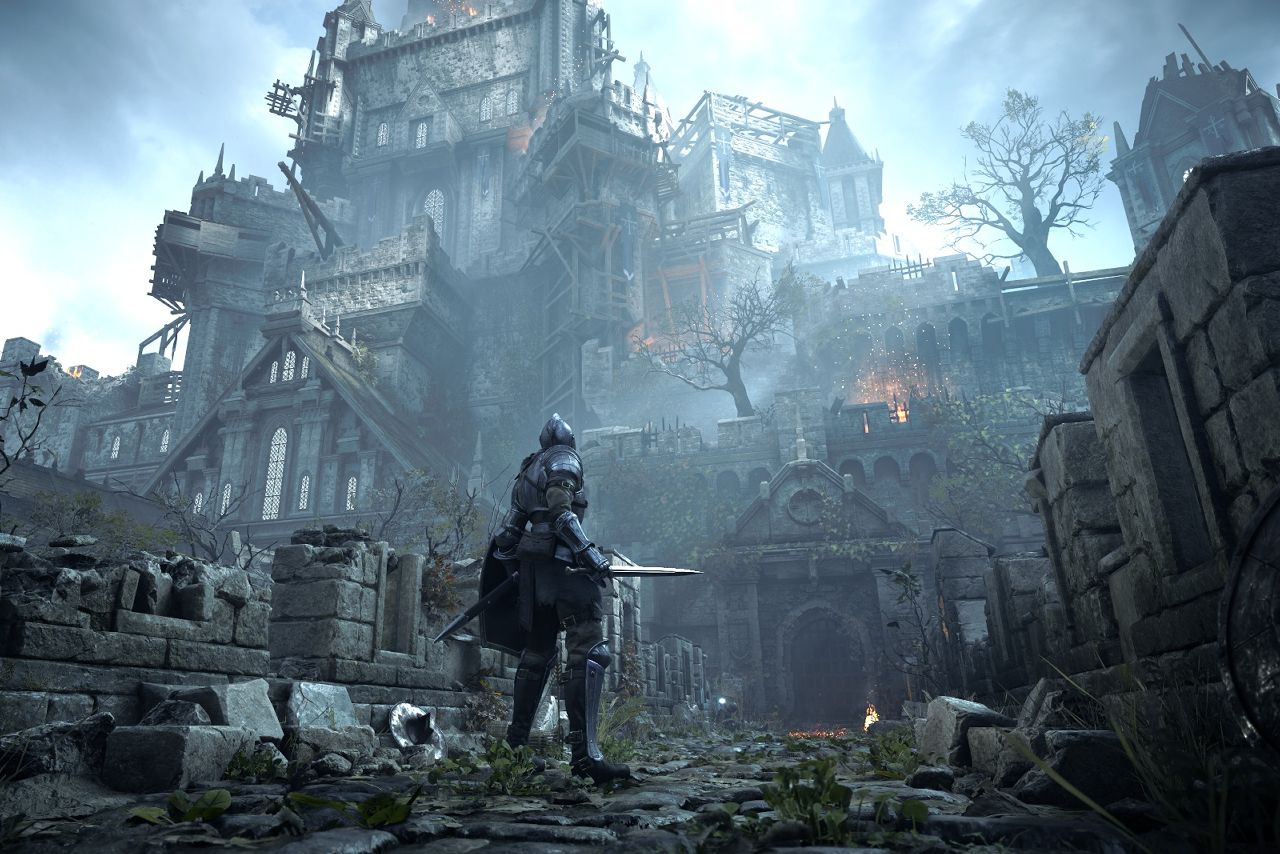
Connected World and Birth of a Phenomenon: Dark Souls (2011)
Dissatisfied with their partnership with Sony, FromSoftware found a new publisher. When Demon’s Souls suddenly gained cult status, Bandai Namco offered FromSoftware the chance to create a spiritual successor (which was initially titled Project Dark) without exclusive obligations to Sony. This is how the idea of Lordran emerged: a single nodal space where levels are intertwined through elevators, secret passages, and shortcuts. This world-building turned exploration into an intellectual game: the better you understood the geography, the broader the tactical possibilities that opened up.
Gameplay changes of Dark Souls
The internal mechanics also underwent important changes. Bonfires appeared for the first time as checkpoints and a leveling point, and the humanity system added risk: once you became human, the probability of another player’s invasion increased dramatically. The tension between the desire for co-op and the fear of being killed by a PvP invader created the emotional swing that would become a hallmark of the genre.
The story of the fading and reigniting flame emphasized the cyclic nature of the world: each kingdom is doomed to repeat the fate of its predecessors unless the player chooses to break the cycle and let the world die. This is not a new idea in games or art in general, and it has been used quite often in various great games (my favorites include Darkest Dungeon and Signalis).
PC port and DRM struggle
Players love to complain about Denuvo (sometimes for good reason), but there were worse options back in the day (like StarForce and Games for Windows Live). In 2012, the Dark Souls version for PC, unfortunately, got the latter. Prepare to Die Edition was released for Windows, but to fans’ disappointment, it was burdened with the GFWL. It required a separate account, frequently failed to sync saves, and would terminate invasion sessions if the service crashed. Many PC players simply couldn’t log into the game on release day.
The situation was further aggravated by a 30 FPS lock and a rendering system tied to a timer, which caused animations to speed up when the frame cap was removed. Only two years later, Bandai Namco transferred Dark Souls to Steamworks and enabled save migration. Still, the initial fallout showed how fragile even the most respected games’ reputations can be when DRM interferes with the core experience.
Player reception and cultural impact
Despite the technical flaws, Dark Souls captivated audiences and the media. In 2015, it was revealed that the game had sold 8 million copies worldwide, with 40% of sales coming from the PC platform. Dozens of essays analyzing the game as a metaphor for fighting depression, and the sudden appearance of the term Soulslike.
The blatant difficulty made “YOU DIED” a meme, while asynchronous messages like “try jumping” on the edge of a cliff and “amazing chest ahead” before the female NPC became a subculture of irony (evolving to “fort, night” in Elden Ring). Dark Souls ultimately cemented FromSoftware’s role as the studio that makes players suffer—and does it for their own triumph.
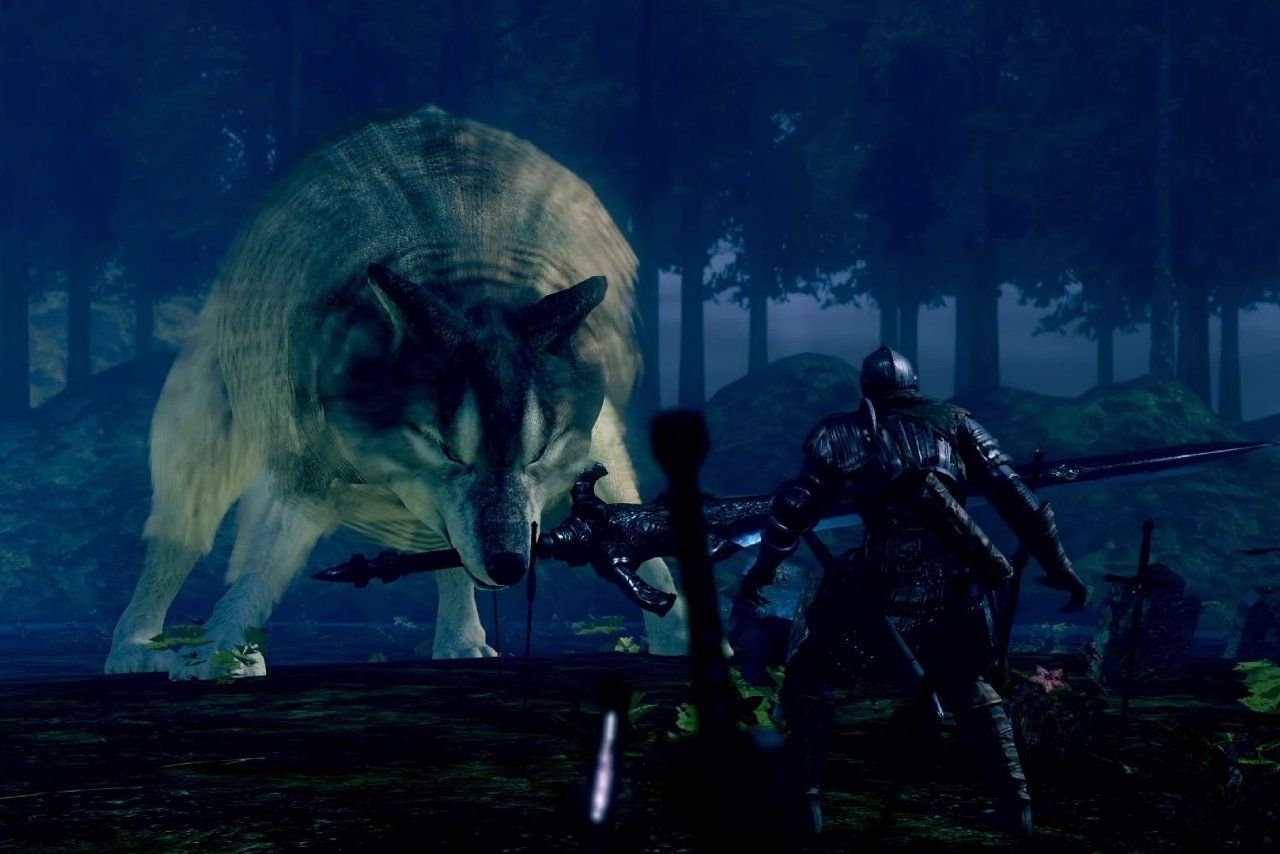
Bold Experiments, Divisive Sequel: Dark Souls II (2014)
When Hidetaka Miyazaki joined the board of directors of FromSoftware, Dark Souls II was headed by a duo of producers: Tomohiro Shibuya and Yui Tanimura. The studio worked in two parallel teams: one was building a game on the outdated PS3/X360 engine, while the other was creating a more advanced demonstration on DirectX 11 for PC. This partly explains the infamous downgrade in lighting (the other part is technical limitations): in press builds, the torch was essential, casting deep shadows, but in the release version, darkness became largely decorative.
The linearity of the maps disappointed Lordran fans: elevators no longer connected areas, while doors led to geographically impossible biomes. But quality-of-life improvements increased: fast bonfires in the Majula hub, infinite weapon repairs at checkpoints, and the ability to reset areas (including bosses) using a Bonfire Ascetic.
A new stat, Adaptability
The main experiment was the Adaptability stat, which directly affected the number of invulnerability frames (iframes) during rolls. In previous games, the effectiveness of a roll depended solely on armor load, but now players had to sacrifice damage scaling or defensive stats to raise Adaptability to at least 95 (soft cap, about 13 frames). ADP also affected item-use speed, adding another layer of obscurity.
Many players saw this as an artificial complication: with low ADP, a roll could catch attacks even when they visually seemed to pass cleanly, and newcomers often didn’t realize that the issue wasn’t their reaction time but their stats. Still, the system encouraged more deliberate timing and introduced powerstance—a two-handed style where synchronized weapon attacks compensated for the lack of a shield.
Other DS II gameplay changes
Another questionable decision, the developers introduced Soul Memory, a counter for all souls ever earned by the player. Matchmaking now pairs players based on total accumulated souls, even if they burned souls or reduced their level. The elegant idea turned into a nightmare for the PvP community: a co-op player farming bosses could suddenly find themselves matched with PvP veterans, while clean duels required elaborate setups with limiter rings.
One more controversial feature was enemy exhaustion: after roughly a dozen kills, enemies would disappear from the world until the next New Game cycle. This was designed as a soft anti-tilt mechanism, allowing a stuck player to clear a path to a boss and avoid tedious farming. But the results were mixed: beginners could practice timings without constant enemy pressure, while experienced players lost an endless source of materials and souls for experimental builds.
Most controversial entry to the series
The Scholar of the First Sin (2015) partially rebalanced the game, increased enemy density, and updated lighting for DX11, fixing the initial downgrade. However, the debate over the “correct” iframes and Soul Memory left DS II as the series’ most divisive entry: some called it the best gameplay sandbox; others—a failed experiment.

Lovecraftian Cosmic Horror, Bound by Platform Exclusivity: Bloodborne (2015)
When FromSoftware shifted from medieval fantasy to the new setting, it did so exclusively for PlayStation 4: Sony acted as publisher and retained full IP rights. This partnership provided a generous budget and enabled bold, creative risks, but it also locked the game onto a single platform. As of 2025, there has been no official PS5 patch or PC release, and the situation has long become a meme.
Gameplay changes
The gameplay formula changed radically. Passive shield blocks were replaced by the Rally system: if you struck back before a short timer expired, you regained some lost health, encouraging aggression. The trick weapons offered two distinct modes with different animations (Saw Cleaver—signature weapon of the game). Instead of the usual Estus flask, there were limited blood vials, turning the grind into a ritualistic preparation for bosses. These changes combined to create the fastest and most violent rhythm in the Souls lineup.
Replayability of Bloodborne
To extend the endgame’s life, the developers introduced Chalice Dungeons: procedurally generated catacombs with unique bosses. This modularity lets the community share the seed of specific generated layouts and hunt for rare runes or damage gems, or farm Blood Echoes using bugged enemies. Also, the BL4 challenge run (beating the game at level 4, the minimum level possible) appeared at a time.
Masterpiece, locked within Sony ecosystem
Bloodborne’s legacy is paradoxical today. On one hand, the game continues to sell in 2025, and its aesthetics have inspired a wave of titles (most famous and successful would be Lies of P). On the other hand, its technical flaws have long been apparent: a 30 FPS cap (and heavy FPS drops in some boss fights), lengthy load times, and no HDR support.
The question of a sequel remains open: former PlayStation head Shuhei Yoshida has hinted that Sony is waiting for Miyazaki himself to become available and willing to return to the IP—otherwise, the studio reportedly does not dare to touch it (it’s up to you to decide whether to take his word for it or not). As a result, Bloodborne remains both a triumph of creativity and a stark example of how a hard exclusive can lock a masterpiece into the technical state of its original release.
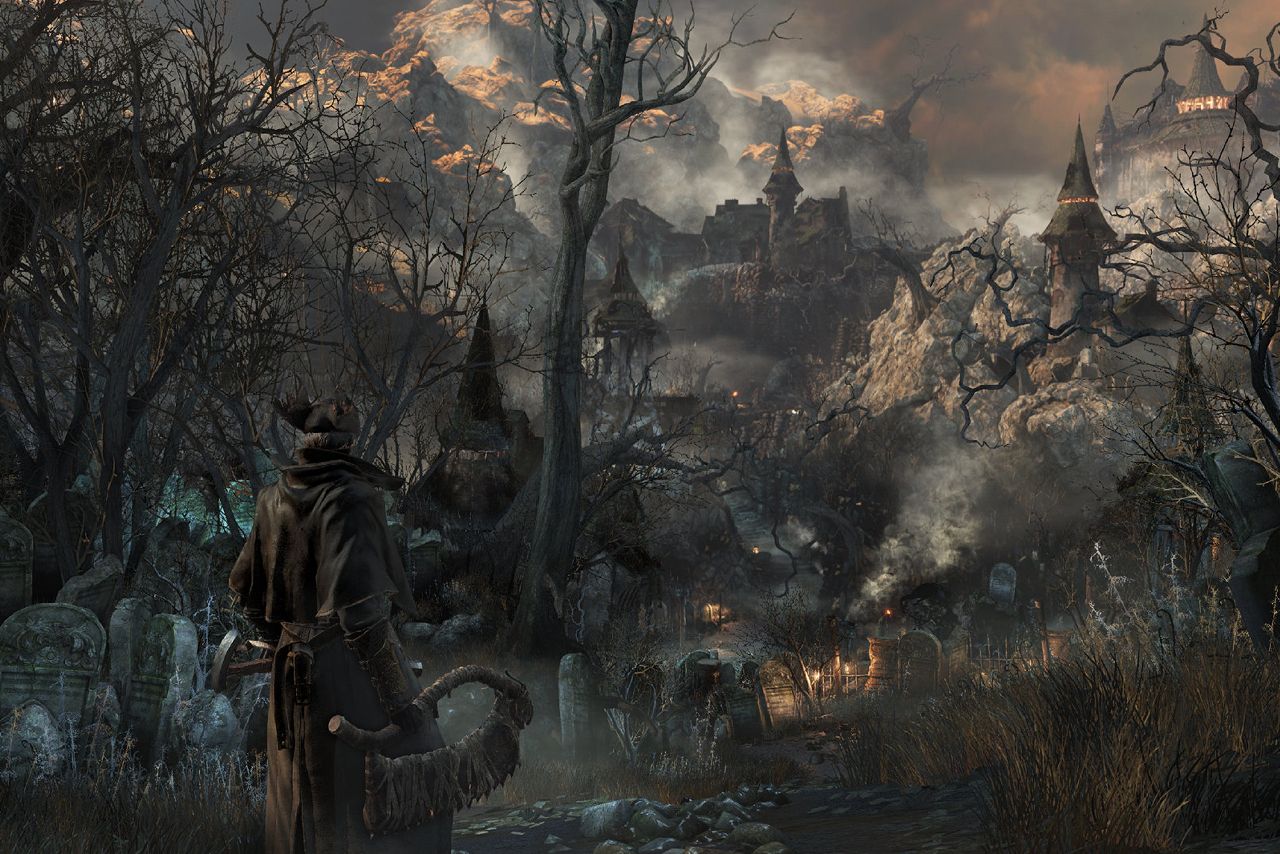
End of the Cycle: Dark Souls III (2016)
Return to Lordran
The third part deliberately builds bridges to the first Dark Souls. The already-established Firelink Shrine evokes deja vu with its round hall and the silent, crowned guardian. The towering ruins of Lothric, where spires are layered atop one another, echo the vertical bundled worlds of Lordran: elevators open shortcuts, and the eye is constantly drawn to distant places where the path will lead later. This gambit of architectural memory frames the overarching theme of fading legends: the world literally consists of the wreckage of past kingdoms, gathered at the last weary bonfire.
Synthesis of mechanics
In gameplay, the authors combined the ideas and design of previous games. From DS1 came the familiar shield-and-stamina rhythm; from DS2, they took free equipment load control and the counter of adaptive frames in heavy attacks; from Bloodborne, they borrowed longer rolls and a more aggressive, animated combat flow.
The culmination was the Weapon Arts system: each weapon gained a unique stance with a separate set of techniques, activated by consuming focus points (FP, a new bar that hadn’t existed before, was now also used for casting magic). This made it possible to combine classic build archetypes (strength, dexterity, magic) with situational super attacks, encouraging experimentation without fully committing a character to one path.
PvP changes in DS III
The developers kept the old peer-to-peer netcode but introduced password matchmaking, allowing friends to play together regardless of level. In PvE, this was a boon, but online it gave rise to the gank squad meta: three or four lightweight phantoms waiting for any invader with pre-built Weapon Arts, while the hyper-armor of heavy swords let them trade blows with impunity. With high latency, teleport/lag hits became common, and the duel scene quickly shifted to the closed arena of Undead Match, where rules tried to compensate for network flaws. Thus, the space intended as the culmination of the asynchronous Souls experience became the most controversial part of the game.
In Dark Souls III, the invading player’s supply of flasks was automatically reduced: if the host could carry up to 15 flasks, the invader received exactly half, a maximum of 7, regardless of their own upgrade. This asymmetry only reinforced the gank meta, where a lone invader had to value every sip of health far more than their opponents.
Technical leap, boss design, DLCs
The move to the newer version of the game engine delivered stable 60 FPS, faster loading times, and richer physics. The art team leaned into visual contrasts: the shimmering fencing of Lothric’s throne rooms versus the viscous battle against the Demon Prince in the ashen abyss.
The DLCs expanded these contrasts. Ashes of Ariandel took players into a wintry dying world, while The Ringed City brought them to the very edge of time, where relics of all eras lay stacked in a ring valley. The final bosses of both expansions (Sister Friede, the inverted Artorias, and the multi-phase, multi-layered Slave Knight Gael) set a benchmark for combining speed and evolving phases, accompanied by a grand, soaring soundtrack.
Dark Souls III: final verdict
Critics hailed DS III as the most accessible entry point in the series: the familiar shield logic combined with optional fast aggression and a stable 60 FPS helped newcomers learn timing more precisely. At the same time, veterans saw the game as a farewell: nearly every level quoted locations from earlier entries, and the final battle with the Soul of Cinder literally fused the movesets of Gwyndolin, Artorias, and the Lords of Cinder.
The ending (choosing between inevitable extinction or the futile rekindling of the flame) brought a meta-commentary to the trilogy’s core theme: everything fades, but it’s still worth trying. And although the multiplayer remained controversial, for the PvE audience, Dark Souls III cemented FromSoftware’s status as masters of a somber yet triumphant apotheosis, closing the cycle that began in 2009 the same way it started—with a sacrifice at the bonfire.

Sudden Shift: Sekiro: Shadows Die Twice (2019)
When FromSoftware announced Sekiro, many expected another Souls-like, but the studio deliberately dismantled the usual pillars. There are no classes, levels, or equipment swaps: instead of role-playing builds, the player gets a fixed hero with an evolving set of ninjutsu arts and prosthetic gadgets. Attacks and parries fill the posture gauge, and breaking it throws the opponent off balance, allowing for an instant deathblow. Because of this, fights are not about grinding down HP bars but about a rhythmic fencing performance, where perfect deflections matter more than raw damage.
Gameplay changes
The instant respawn system changes the usual drama of death: the player can immediately get up and continue the fight, turning defeat into a tactical maneuver. However, after two deaths, a harsh penalty kicks in: Dragonrot—NPCs become infected, some quests get blocked, and cures require rare Dragon Tears. This way, FromSoftware preserved the risk without breaking the flow of action.
Verticality became a new pillar: the grappling hook lets you instantly zip onto temple rooftops or behind a giant’s back. Multi-level maps encourage stealth: finding the right path through pine branches and pagodas lets you eliminate half a camp before an open duel begins. This freedom of approach forces players to learn how to read environments, not just memorize boss patterns.
Cinematic experience
The abundance of cinematic duels (Genichiro atop Ashina Castle, the Great Shinobi Owl) sparked the fiercest debate over difficulty since Demon’s Souls: some players demanded a story mode, while others argued that Sekiro teaches you to listen to the music of steel. Miyazaki stood firm on the principle, and the game won Game of the Year at The Game Awards 2019, selling over 10 million copies by 2024.
This was the second major experiment in breaking away from the traditional Souls formula (the first being Bloodborne), and it too proved to be a success. Thanks to this, FromSoftware mastered pure action and set a new standard for combat—one that all hardcore action games now have to reckon with.
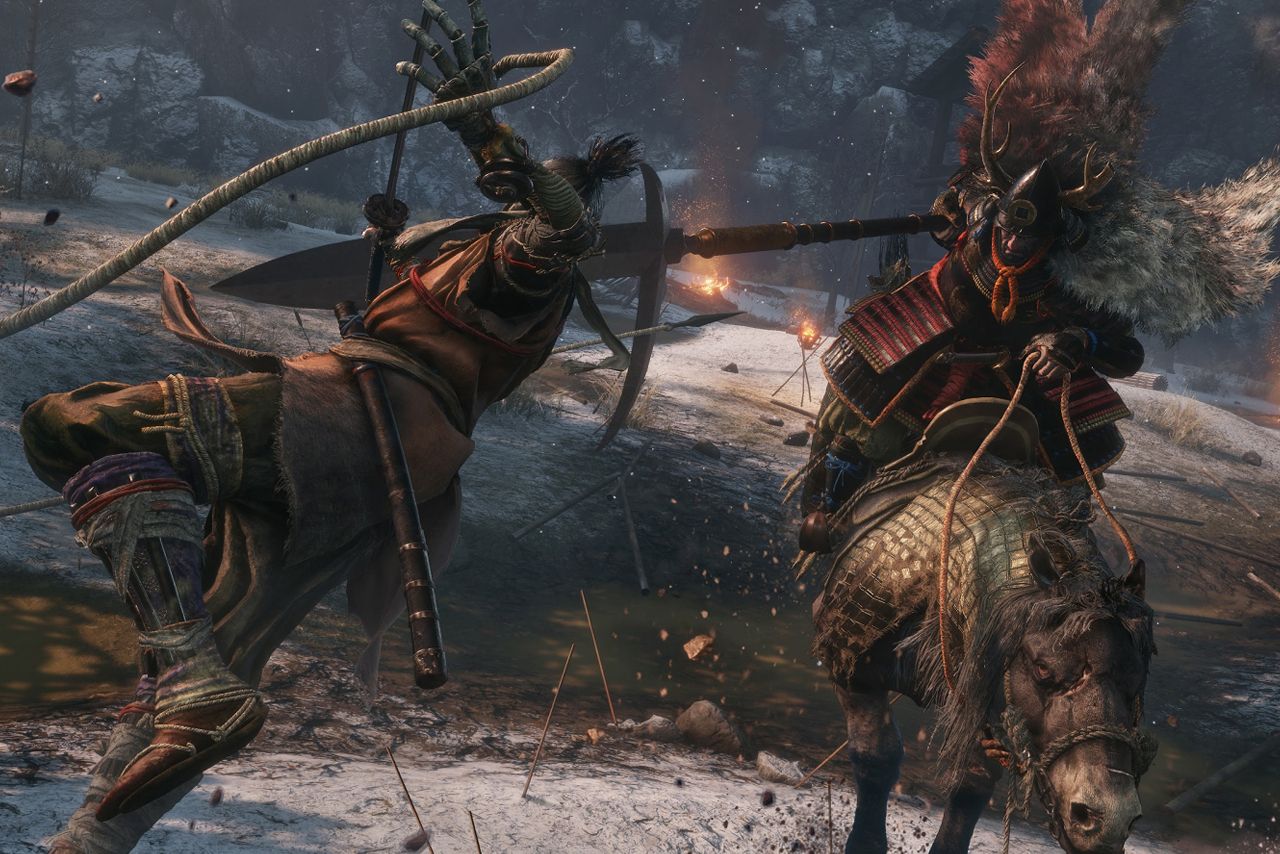
Pinnacle of Soulsborne: Elden Ring (2022)
Collaboration with George R. R. Martin
Miyazaki invited George R. R. Martin to help craft the new universe as a historian—he set the mythic foundation at the point where the player enters the action. Martin created a dynastic tree, chronicled ancient wars, named the Great Runes, added a lot of dragons, and left the rest to FromSoftware. This division of labor allowed the studio to maintain its trademark fragmentation, while offering a clarity rare in FromSoft’s work: each location is connected not by abstract metaphysics, but by a specific family drama of demigods.
The open world in Souls game
The landscapes of the Lands Between are perceived as a set of archetypes—a wasteland, a swamp, an academy, a capital—assembled from ideal forms and then worn down by time. The player explores not a realistic geography, but resonant symbols that are immediately readable, even when crumbling.
Exploration was further enriched by three key systems: the double jump of the Torrent steed, the vertical level design of elevated peaks, and hundreds of pocket dungeons. Instead of Souls’ somewhat linear system, the open world offers a gravity of interest: a bell tower on the horizon or the glow of the Erdtree draws the player in as effectively as a quest marker.
Breakthrough sales and GOTY award
Elden Ring launched with a peak of more than half a million simultaneous players on Steam, and after two weeks, hit an all-time peak of 953,426, currently the ninth-highest peak in the platform’s history. By February 2024, sales had exceeded 25 millions, and by April 2025, Bandai Namco reported the 30 millions mark. At The Game Awards 2022, the project took the top honor (Game of the Year) and three additional awards, mirroring Sekiro’s success two years earlier. The Shadow of the Erdtree expansion (June 21, 2024) extended the hype, securing a nomination for GOTY 2024 at the same event.
A new standard for Soulslikes
Elden Ring demonstrated that the Soulslike formula can work even on a multi-hour open-world scale. The introduction of jumping puzzles, spirit summons, and dynamic boss difficulty created a flexibility that newcomers lacked in earlier games. At the same time, the core remained intact: each death is still a lesson, and the story is still a puzzle, scattered across the gams’s world and item descriptions. Without exaggeration, Elden Ring became a new starting point for the entire genre, from indie experiments to AAA mega-projects.
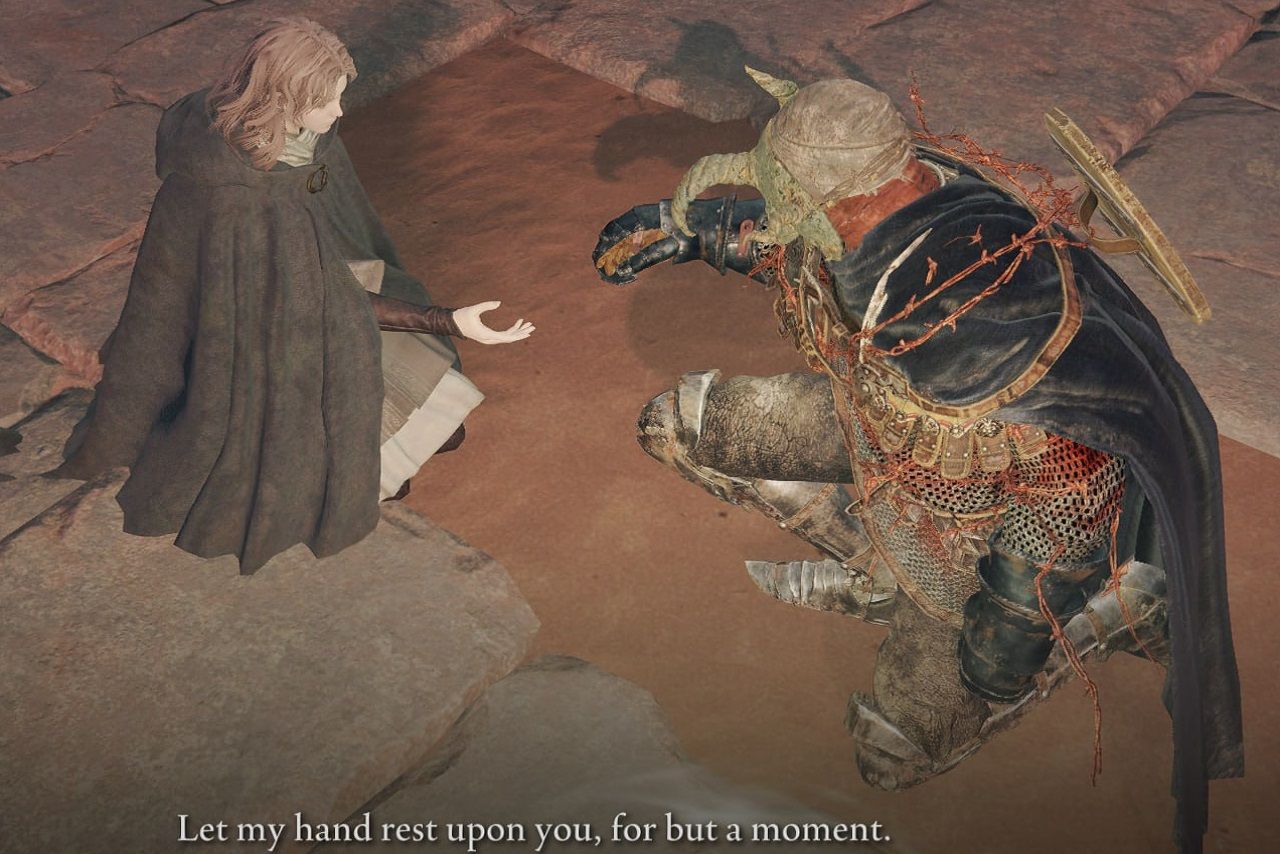
Co-op Twist: Elden Ring Nightreign (2025)
But Miyazaki continued to experiment. The latest Soulsborne release so far is a standalone Elden Ring spinoff with roguelike elements and procedural generation, priced at just $40. The game received rave reviews from critics, and by its fifth day on sale, it had already surpassed 3,5 million copies sold. However, player feedback has been mixed. Why?
It’s because Miyazaki introduced a new kind of challenge: finding friends. No joke—it’s actually difficult. And everyone needs to coordinate their playtime, which is doubly hard when you factor in college or work, and time zones. The spinoff is designed for cooperative play of specifically three players, making it tough and unbalanced for solos and duos, even after the latest patches.
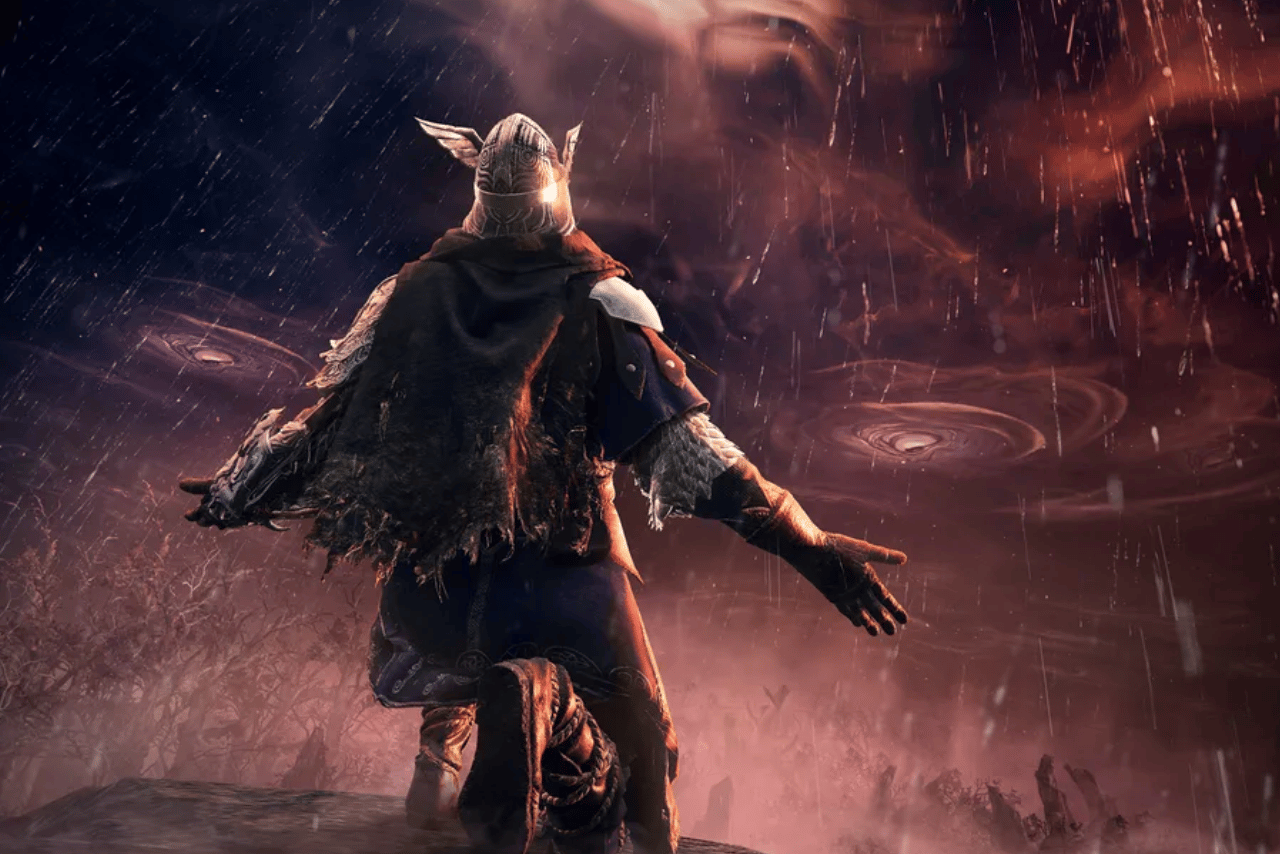
Core Themes and Motifs of Soulsborne Series
Death, rebirth, and cyclicity
Every FromSoftware game is built around an endless cycle of death, and therefore gives death a special meaning. Souls, blood, and runes are all currencies the player loses upon making a mistake, but can reclaim if they decide to take the risk again. This looping rhythm teaches as much as it tells a story: Boletaria suffocates under the fog, Lordran fades, Lothric is cobbled together from the ruins of past kingdoms, and the Lands Between crumble into fragments of the Greater Will.
The Souls universe knows no final outcomes—only shifting phases; the player must decide each time whether to prolong the agony or to let everyone rest.
Minimalistic narrative
FromSoftware refuses to explain directly, replacing long, boring cutscenes with environmental storytelling and item descriptions. An abandoned temple, a broken sword, and a headless statue are the clues that the player assembles into their own version of the story. With Miyazaki, the narrative became an act of deduction; knowledge of the lore is not a reward given in a cutscene, but a trophy of attentiveness.
Doomed heroism trope
Success in Soulsborne games is always ambiguous. By defeating a demon or demigod, the player merely delays or hastens the inevitable collapse. The final choices are between “rekindle the flame” and “let the darkness come”: both outcomes are experienced as tragedies, not victories.
Evolution of Game Design in Soulslikes
Demon’s Souls introduced the idea that the player must fail to truly understand the mechanics. Subsequent entries subtly refined this principle. DS II hid the iframe stat within Adaptability; Bloodborne rewarded aggression through its Rally healing system; Elden Ring introduced spirit summoning, flattening the difficulty curve, if the player demanded it. Losing is still painful, but the tools to overcome the difficulty have expanded.
Asynchronous multiplayer
The player feels the presence of the community under their feet. A red pool of blood warns of another’s death; an orange message might save you from an ambush or cruelly encourage you to jump off the cliff for a nonexistent secret. With each release, the range of interactions only broadened, but the imperfect P2P netcode still remains a pain point.
Quality of life changes
Technological progress has gone hand in hand with evolving game design. DS I introduced permanent bonfire checkpoints; DS III brought fast loading and precise controls. Elden Ring finally redefined movement: spectral steed, vertical ruins, instant fast travel between Sites of Grace, and mobile bosses have turned the open world into a dynamic, ever-shifting arena of exploration and combat. Meanwhile, the summoning of Spirit Ashes gave weaker players a joker for particularly tough fights.
Impact on Gaming Industry
Rise of Soulslikes
This topic deserves a separate article, so let’s keep it brief. By 2014, the phrase “it’s like Dark Souls” had become a cliche, and by 2025, the “Souls-like” tag on Steam had more than a thousand entries. In ten years, hundreds of imitators appeared: some aimed to reproduce the formula almost literally (Lords of the Fallen, The Surge), while others blended it with their own DNA (Hollow Knight, Dead Cells, Star Wars Jedi, Remnant).
The most well-known Soulslikes (by developers other than FromSoftware) include Nioh, Lies of P, and Black Myth: Wukong. These games follow the familiar formula of punishing combat, intricate level design, and a sense of mystery, while each brings its unique twist to the genre. Even AAA giants (like God of War reboot) have adopted Soulslike elements. At the level of practical development, a new grammar of combat has emerged: the cycle of input/iframe window/error penalty; concepts that seemed niche fifteen years ago are now taught in game design courses.
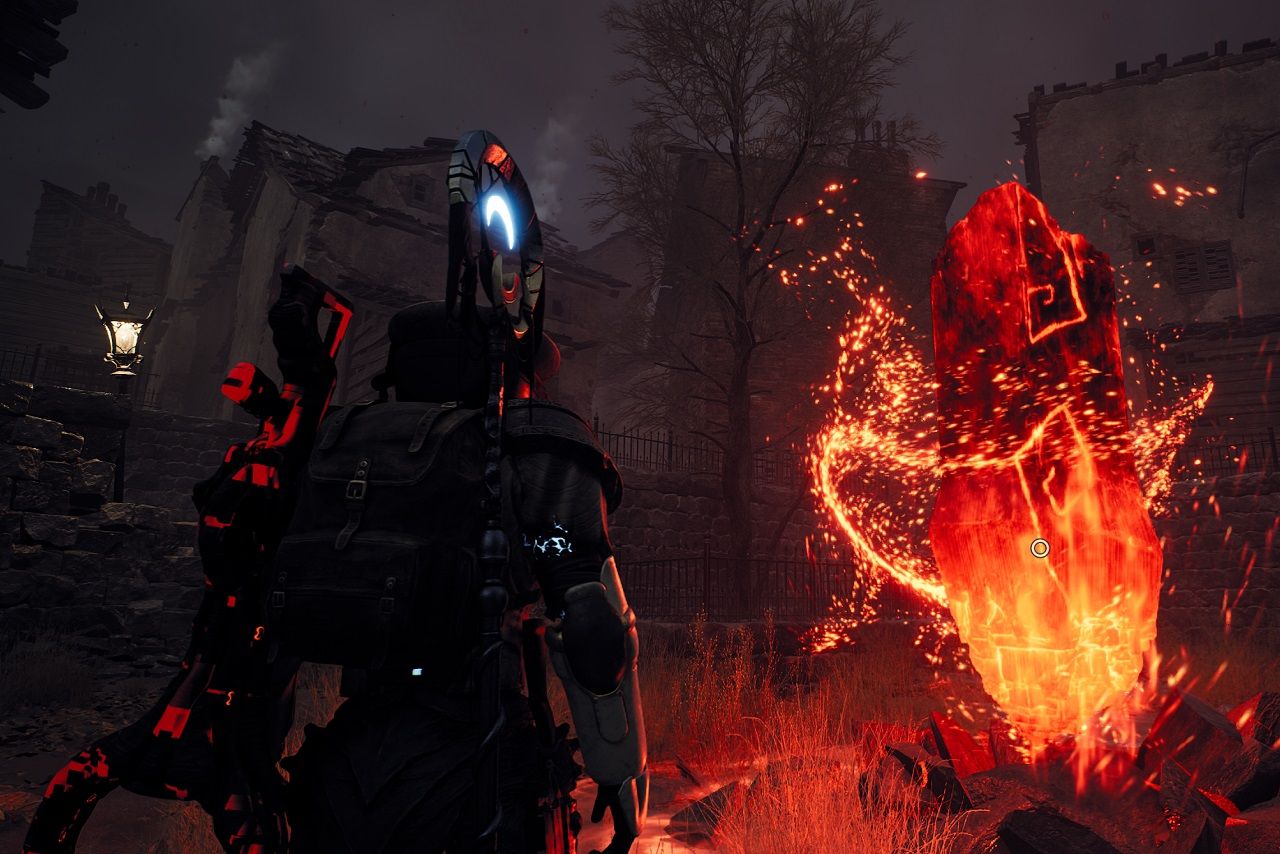
Perception of game difficulty and complexity
The Souls series rehabilitated the idea of an honest ordeal. Until the 2010s, public discussions focused on how to make games more accessible; FromSoftware proved that discomfort can be emotionally rewarding if the rules are clear to the player. This opened the door not only to AAA hardcore games; indie hits like Dead Cells and Celeste successfully combine a high skill ceiling with optional assist modes, a compromise born from debates around the difficulty of Soulslikes.
Cultural heritage
In game design courses, the Dark Souls series now stands alongside Portal and The Legend of Zelda as a landmark case of environmental storytelling. Academic publications explore its level architecture, positive and negative feedback loops, and signature combat systems. The fan community has added its colossal archive too: thousands of multi-hour video essays, a giant detailed wiki for each game, and meticulous fan translations of obscure item descriptions.
Summary: Sixteen Years of FromSoftware Games
Since 2009, the studio has evolved from a risky niche experiment to a trendsetter. Each new game has built a dialogue with its predecessors: Demon’s Souls (successor of King’s Field) established the principles, Dark Souls expanded them into a connected geography, DS II challenged the canons, Bloodborne accelerated the rhythm, DS III set the new baseline and broke free from hardware limitations, and Elden Ring changed the linear loop into an open world.
The formula of Soulslikes isn’t exhausted yet, but it seems it’s no longer enough for Hidetaka Miyazaki. Initially, he was limited by technical constraints, but after Dark Souls III, every FromSoftware game has experimented with different ideas across genres. Sekiro took a more streamlined and cinematic approach, Elden Ring introduced an expansive open world, Nightreign focused on co-op gameplay, and the upcoming Switch 2 exclusive, The Duskbloods, has the PvPvE in its core, inspired by Escape from Tarkov.
Whichever path FromSoftware games will take, so far, Miyazaki’s genius has never failed them. The lesson of Soulsborne is clear: mechanics, narrative, and aesthetics must fuse, while the player feels the fear of loss and the thrill of victory.
Why Soulslikes remain relevant
In an era of gaming dominated by live-service titles chasing endless retention, Souls games prove that a finite, perilous experience can feel far more valuable. They don’t merely let players move through a story, but ask them to become its co-author, piecing together fragments of lore with their own hard-won triumphs.
As long as games aim to make people doubt, try, and learn, FromSoftware’s philosophy will remain in demand—because death, and the victory earned in overcoming it, is inexhaustible.



